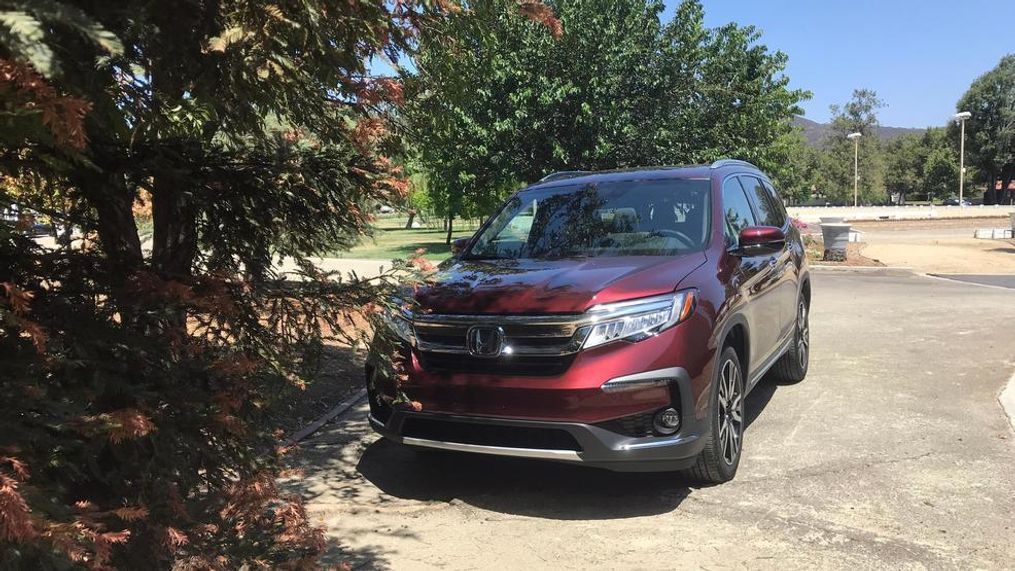5 things to know about the 2019 Honda Pilot
The Honda Pilot was all-new for the 2016 model year, so the updates to this third-generation full-size SUV are what we call a mid-cycle refresh. It can’t be deemed “all-new,” even though there are some all-new features and design tweaks.
Out of everything that’s changed, here are the five things we think you should know.
Yes, there is a volume knob
Sometimes technology goes too far, and even though something seems like a good idea at the time, it isn’t. At all. Like removing the volume knob in favor of a touch-screen volume slider.
Though the slider was very tech-forward and looked kind of cool, it didn’t function well. This left Honda owners clamoring for the return of an honest-to-goodness dial.
Honda listened.
Honda Sensing is standard across all trims
Previously only available in up-level trims, Honda makes the up-level safety suite standard starting at the base LX trim.
Honda Sensing includes lane keep assist, road departure mitigation, adaptive cruise control, forward collision warning and automatic emergency braking. It does not include blind spot monitoring, automatic high beams or rear cross-traffic alert.
Those features are standard starting at the EX trim, which is one level up from base.
The engine hasn’t changed, but parts of the powertrain have
For those who have been asking for a more powerful Pilot, prepare to be disappointed. Honda carries over the 3.5-liter V-6 from the 2018 model with the same 280 horsepower and 262 pound feet of torque.
While we found this adequate in our first-look test, it can by no means be called “zippy.”
The six-speed automatic transmission in the LX, EX and EX-L also remains unchanged. But the 9-speed automatic in the Touring and Elite trims gets tweaked, most notably adding a second-gear launch for smoother acceleration when in the “Normal” drive mode under light to moderate throttle.
Another notable change occurs to the auto stop/start (or “idle stop”) feature that comes with the 9-speed automatic transmission. It offers a quicker engine restart as well as a second-gear launch for a smoother experience. I still hate this feature and turned it off every time.
The front and rear are restyled
Honda made a big deal out of the fact that the Honda Pilot is much more capable than you think. In fact, they hired a couple of off-road gurus to come out and build a small obstacle course worthy of a true off-road vehicle just to demonstrate the vehicle’s prowess.
Thus, Honda tweaked the Pilot’s design to look more aggressive and capable. The most visible changes are to the front and rear, with more blunted lines and hard angles. But some other changes include reverse lights that are integrated into the taillights and standard LED headlights.
There are plenty of new Pilot-first features
As a part of the refresh, Honda also shuffled around some of the features within trims, making things like blind-spot monitoring, heated front seats, memory driver’s seat and heated second-row seats available earlier in the trim cycle.
But the automaker also realizes this is a family oriented vehicle and learned from the success of its Odyssey minivan, adding several all-new features to the full-size SUV.
Features new to Pilot include: CabinControl, CabinTalk, HondaLink telematics, hands-free access to the liftgate and wireless phone charging.
The Bottom Line
The Honda Pilot was already an excellent vehicle, which is clear by the fact calendar-year-to-date sales are up 38 percent and sales are only limited by the capacity to make them.
And yet the Pilot gets even better for 2019.
I really like the comfortable ride and family friendly features throughout the vehicle. And though I could do with a little more oomph from the engine, the fact that this vehicle gets 21 to 23 mpg in combined driving (depending on powertrain) is worthy of notice.
Want more information on the 2019 Honda Pilot? Be sure to check out our full first-look review.




